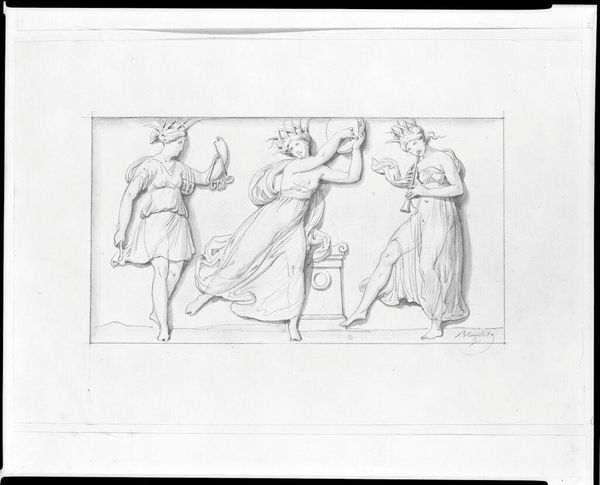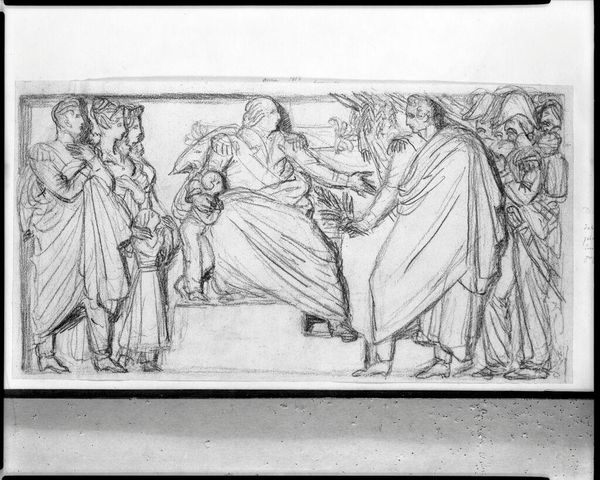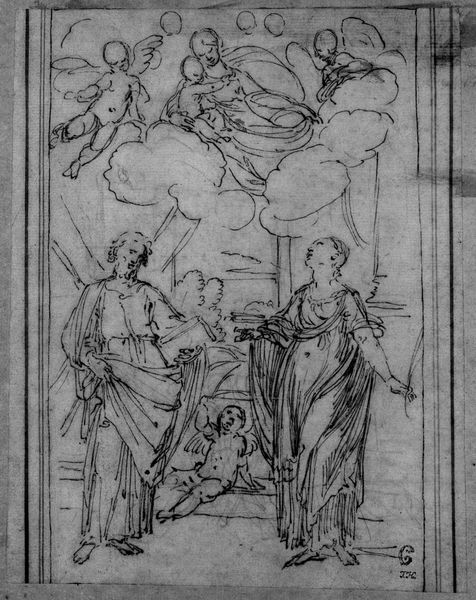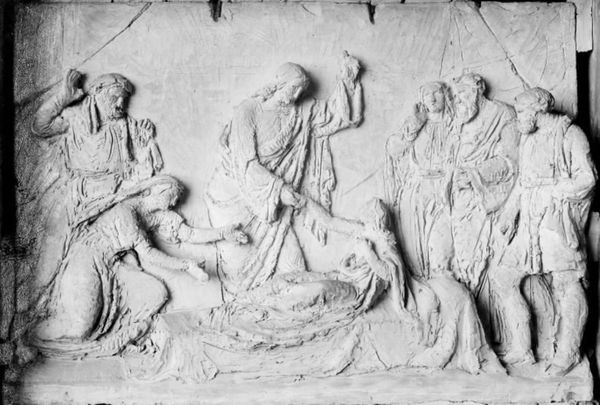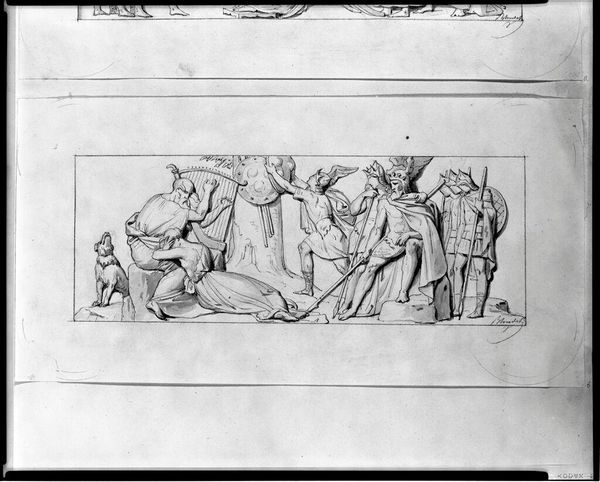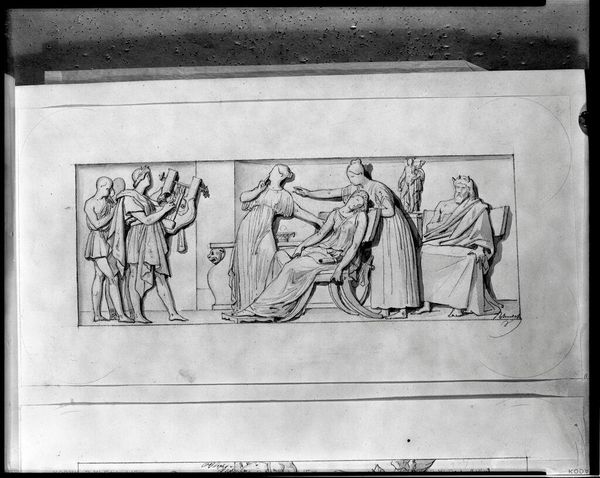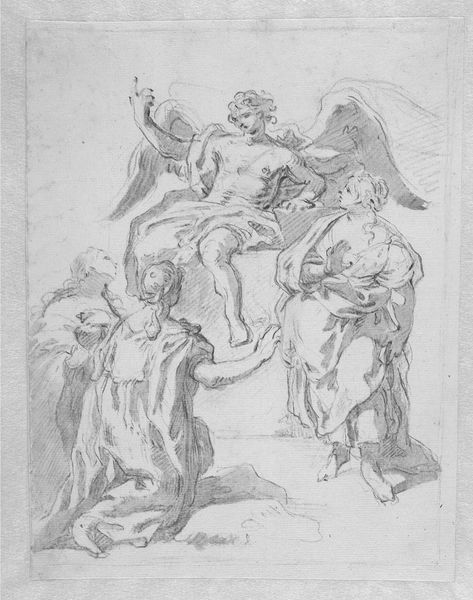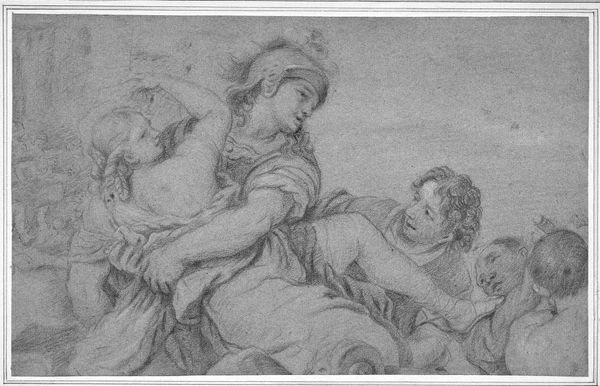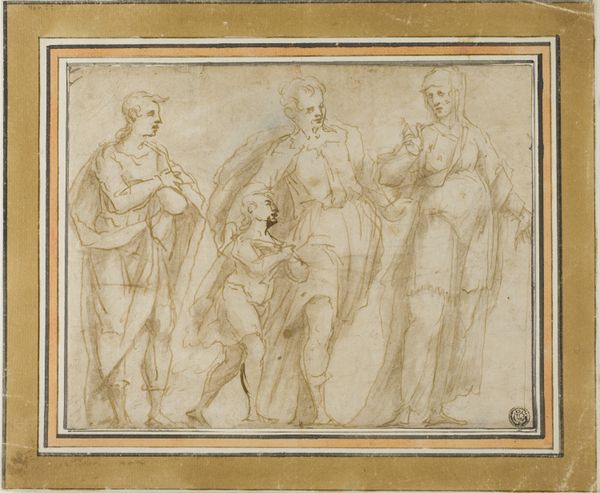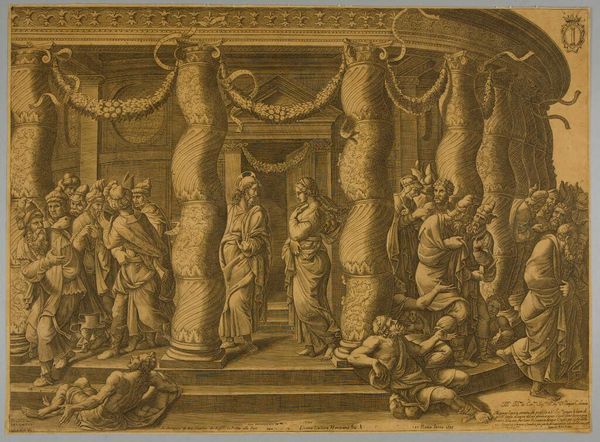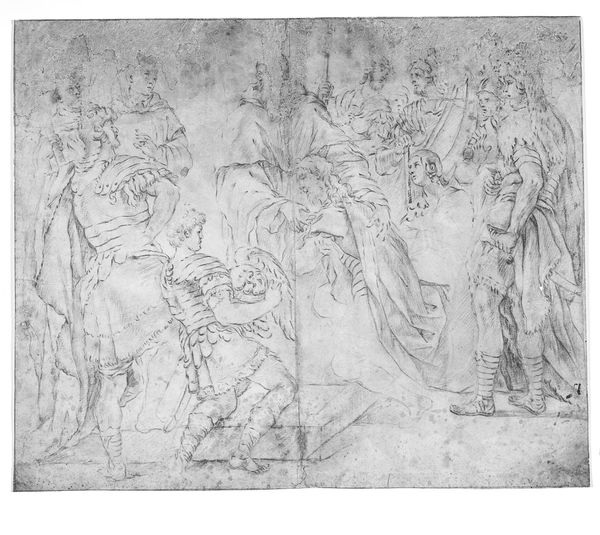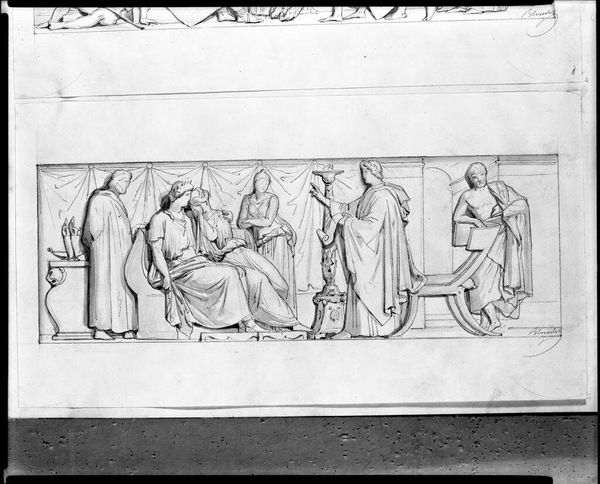
Ceres trøstes. Studie efter dekoration i Sala dell'Estate. 18th century
0:00
0:00
drawing, paper, pencil
#
pencil drawn
#
drawing
#
toned paper
#
pencil sketch
#
charcoal drawing
#
figuration
#
paper
#
11_renaissance
#
hand drawn
#
group-portraits
#
pen-ink sketch
#
pencil
#
history-painting
Dimensions: 249 mm (height) x 399 mm (width) (bladmaal)
Editor: This is Hendrik Krock's 18th-century pencil drawing, "Ceres trøstes. Studie efter dekoration i Sala dell'Estate." The figures seem caught between mourning and consolation, like a muted theatrical performance. What underlying narratives might be at play here? Curator: This drawing, a study for a ceiling decoration, presents an opportunity to consider the visual language of power and its deployment within the decorative arts. Think about who these figures might be – Ceres, the Roman goddess of agriculture, possibly being consoled by other female figures. How does that influence our reading? Editor: Well, the feminine form seems idealized but also passive, almost frozen. Curator: Precisely. Consider the historical context: an 18th-century aristocratic setting where such depictions reinforced specific ideals of womanhood—virtue, suffering, and the expectation of solace within a patriarchal structure. How do those expectations play out today when we look at representations of women? Editor: So, it’s not just a scene of comfort but perhaps also a coded message about women's roles? Curator: Exactly! And consider Krock’s artistic choices: the muted tones, the classical drapery. How do they contribute to the scene's sense of decorum and restraint, fitting for its intended location? Do these constraints tell their own story? Editor: That makes me rethink the composition; the women’s grouping suggests both closeness and a sort of containment. Curator: The artwork then, functions on multiple levels. As a study, it offers insights into the artist's process. More broadly, it reflects and reinforces social norms, sparking reflection on identity and representation. Editor: I see now; it prompts critical engagement with the past instead of passive viewing. Curator: Indeed, it invites us to unpack the historical baggage and challenge established norms.
Comments
No comments
Be the first to comment and join the conversation on the ultimate creative platform.
